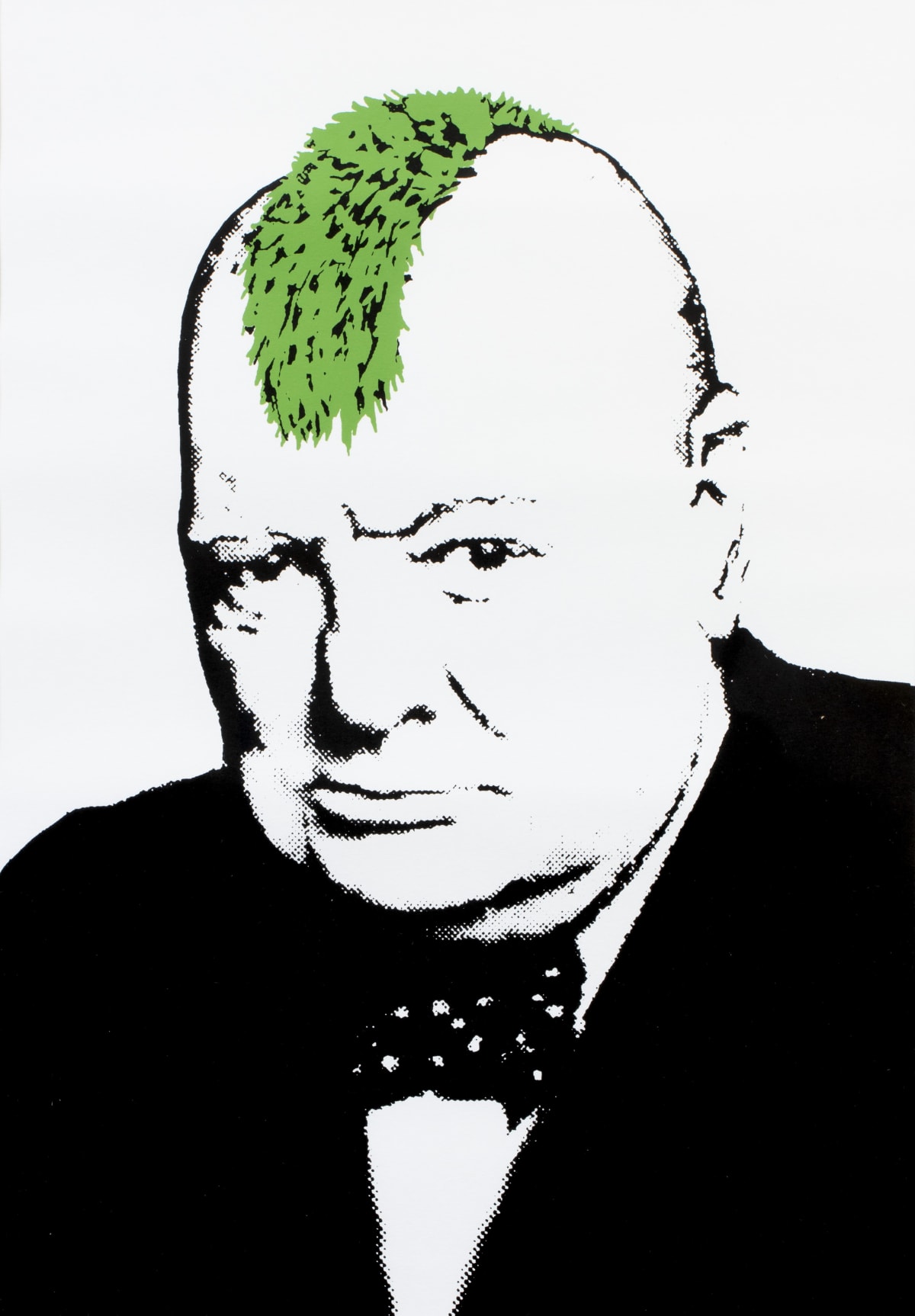Inwardly Punk...
Can Banksy be considered punk? Punk, born out of the hardships of the 1970’s punk came to epitomise an anti-establishment attitude, a rejection of commonly accepted societal norms and a desire to fight the institutional powers that be. Much like the punks who would meet along the King’s Road five decades ago and fight with the Teds, we can certainly see how Banksy has a punk attitude. Firstly, the very act of graffiti is one of defiance. Working outside the parameters of the law, graffiti art is known for its fervent rejection of establishment norms and its transgression of the rule of law. Cloaked in anonymity, known only to a select view, Banksy’s refusal to play by the rules of the artworld also pushes him, or perhaps pogos him, into the punk camp. In terms of his approach, Banksy’s rejection of a traditional gallery model, his use of pop-ups (a nod to punks squatting in disused houses maybe?) and cement him as having a certain punk attitude.
Outwardly Punk...
In terms of his artworks, the theme of the punk, or at least, a certain iconography associated with the punk movement is a recurring motif that features in several works by the artist. We explore Banksy and his use of punk symbolism through a selection of our favourite artworks.
Turf War
A seminal artwork, Turf War the painting was the centrepiece of the artist’s bold and infamous second solo exhibition, which marked his breakthrough, taking the British art scene by storm in July 2003. Showing the anti-establishment wit and satirical humour integral to the very best of Banksy’s output, the work depicts a portrait of Sir Winston Churchill on a huge scale (254 x 254 cm). Churchill is a figure revered by many for his successful premiership that played a part in Britain’s triumph in the Second World War and criticised by others for his strong monarchist and imperialist views. While clearly referencing Yousuf Karsh’s portrait of Churchill that once became emblematic of British defiance against fascism, Turf War – executed on canvas in Banksy’s acclaimed stencilled style – subverts the pathos of the original image by portraying the British political icon with a green mohican made from turfed grass. Born out of Banksy’s rebellious visual language, this irreverent depiction continues to hijack the physical and conceptual spaces that, in Banksy’s own words, do not belong to him, unsettling the social order upheld by an elite class.

Lenin Punk
Released in 2003,Punk Lenin is from a small edition size of 5 and features the Russian revolutionary leader Vladmir Lenin with a classic punk mohawk haircut and hooped earring in his right ear.Punk Lenin, much like Turf War, uses the mohawk haircut to channel the spirit of punk and subvert the figure who wears the haircut. The artist challenges our notion and our associations with the figure of Lenin and pokes fun at the historical figure. The expectations of the viewer are toyed with and changed as Banksy expertly takes an iconic figure and creates an amusing contrast and contradiction.
London Calling
Channelling the iconic image found on the front cover of the Clash’s 1979 album London Calling and name, the work was a street art piece that appeared around the late 2010’s. The original album's front cover, designed by Ray Lowerty, features a photograph of bassist Paul Simonon smashing his Fender Precision Bass (now on display at the Museum of London, formerly Cleveland Rock and Roll Hall of Fame) against the stage at the Palladium in New York City on 20 September 1979. In Banksy’s seminal interpretation, we see a figure smashing a chair that is commonly found in offices. Toying with the notion of rebellion and non-conformity we see a figure, presumably an office worker, rebelling against their current situation. An undercurrent of smashing the system is almost tangible in the image as one can read this as Banksy’s views on bringing down the capitalist system.
Grannies
The pop pink Grannies print by Banksy was first shown in painting format at Banksy’s renowned 2006 exhibition Barely Legal in L.A. A year later, Pictures of Walls released a signed edition of 150 an unsigned addition of 600 as well as a small hand-finished signed print edition of just 11. In the work we see two grandmothers who are innocently knitting on armchairs flanked by cups of tea and a lampshade suggesting a cost and warm living room. However, in archetypal Banksy fashion a twist is given to the work as, emblazoned in block-capitals across the jumpers, what they are knitting says “Punks Not Dead” and “Thug For Life”. The humorous work, executed in Banksy’s well-known stencil style, juxtaposes the concept of an innocent grandmother with rebellious slogans.
I Fought the Law
Released in 2004, Banksy’s I Fought the Law was produced in a signed edition of 150 and an unsigned edition of 500 as well as a set of 32 Artist Proofs (8 orange, 8 pink, 8 yellow, 8 red). The central image for the work is inspired by the shocking footage of the attempted assassination attempt of U.S President Ronald Regan by John Hinkley. Hinkley, diagnosed as a delusional schizophrenic, believed that actress Jodi Foster would be impressed with him if he killed the President. In total, five shots were fired with no casualties. Laying wounded, pinned down by armed CIA agents, Hinkley casts a macabre and sinister figure as the full force of his rebellion is crushed by the state. Nullified, the would-be assassin has attempted to fight the law (a reference to the 1979 Clash song of the same name) and lays paralysed - grievous action failed as the establishment takes over.
For more information on our Banksy paintings for sale or to buy Banksy prints, contact Andipa via sales@andipa.com or call +44 (0)20 7581 1244. Alternatively, sell your Banksy print with Andipa or find out more about selling Banksy paintings and artworks.